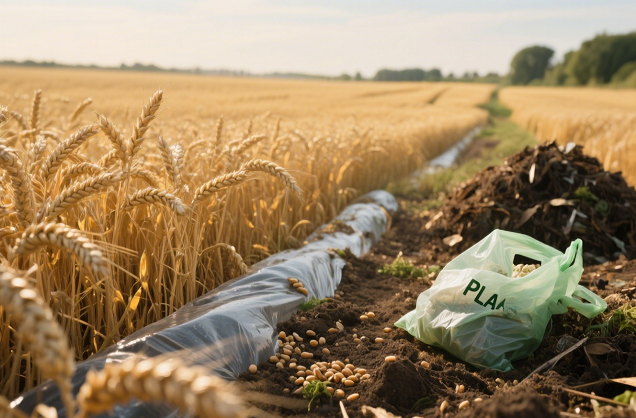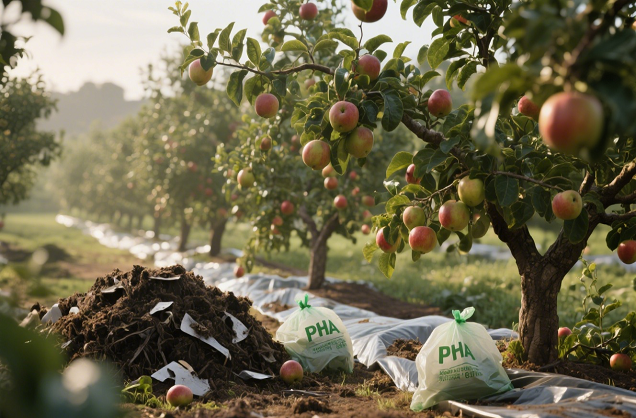A 3-minute look at PLA/PBAT/PHA: which material is best for you?
The Three Difficulties in Selecting Biodegradable Materials
In today’s environmentally conscious world, 68% of consumers are willing to pay a 10-15% premium for truly biodegradable products (Nielsen Research 2024). But with all the “eco-friendly materials” on the market, what’s the difference between PLA, PBAT and PHA? Which one really suits your needs?

Part I: A Quick Comparison of the Three Major Materials
Core Properties Comparison Table (Updated 2024)
Characteristics PLA PBAT PHA
Raw Material Sources Corn/Sugar Cane Starch Petroleum-based + Biobased Microbial Fermentation
Degradation Condition Industrial Composting (58-60°C) Soil/Composting Seawater/ Soil/Composting
Degradation Time 6-12 Months 3-6 Months 2-4 Months
Heat Resistance 60°C 80°C 120°. C
Flexibility Brittleness High elasticity Medium
2024 Price $2.1/kg $3.0/kg $4.2/kg

Part II: Material Selection by Usage Scenarios
Scenario 1: Food Packaging
Best Choice: PLA (high transparency, suitable for cold drink cups, salad boxes)
Alternative: PHA (heat-resistant up to 120°C, suitable for lids of hot drink cups)
Lightning Reminder: PBAT is not suitable for contact with oils and fats (easy to be deformed)
Scenario 2: Shopping Bags / Garbage Bags
Preferred Material: PBAT + PLA Blend (combining strength and degradation)
Measured Data Pure PLA bag: load-bearing 5kg easy to break
PBAT hybrid bag: load-bearing up to 15kg
Scenario 3: Marine products
The only choice: PHA (currently the only one certified for marine degradation)
Cases:
Danish ECONYL uses PHA to make biodegradable fishing nets
6-month seawater degradation rate of 92% (SGS test)
Scenario 4: Agricultural ground cover
The best solution: PBAT (cost-effective, degradation starts in 3 months) (degradation)
Comparison experiment:
PLA mulch: easy to be brittle in low temperature
PHA mulch: too costly (2.3 times more than PBAT)

Part III: 2024 Shopping Guide
1. Recognize certification marks
✅ PLA: ASTM D6400 industrial composting certification is required
✅ PBAT: should be certified for composting by EN 13432
✅ PHA: TÜV Marine Degradation certification is recommended
2. Be alert to common scams
❌ “100% degradable” but no indication of the conditions and time
❌ Labeling of PBAT as “fully biobased” (which actually contains
❌ Passing off oxo-degradable plastics as PHA
3. Cost optimization tips
Requirements Economical solution High-end solution
Short-term use PLA+starch blend Pure PHA
Flexibility required PBAT+PLA(7:3) PHA copolymer
Exposure to high temperatures PLA+mineral filled PHA

Part IV: Latest Industry News
1. Technological Breakthroughs
PLA:
Toray develops heat-resistant PLA (up to 100°C)
Cost is expected to drop to $1.8/kg by 2025
PHA:
Danimer realizes mass production of methane fermentation
China’s production capacity will grow by 300% in 2024
2. Policy Directions
EU: PLA tableware needs to be clearly labeled as “industrial compost” starting from 2025
China: subsidies for PBAT films PBAT film included in agricultural machinery subsidy catalog
US: FDA accelerates PHA food contact approval
If you have any questions you want to know, please feel free to come and consult, and we will be eager to answer them for you.
Contact us now
Fill out the form below
We will contact you immediately.

Summarize your business so the visitor can learn about your offerings from any page on your website.
About
Contact
- Add: Room 4006, No.1 Helong Yiheng Road, Baiyun District, Guangzhou City
- Tel: +8613450255948
- Wechat : +86-13450255948
- Fax: +86-13450255948
- E-mail: 13450255948@163.com
